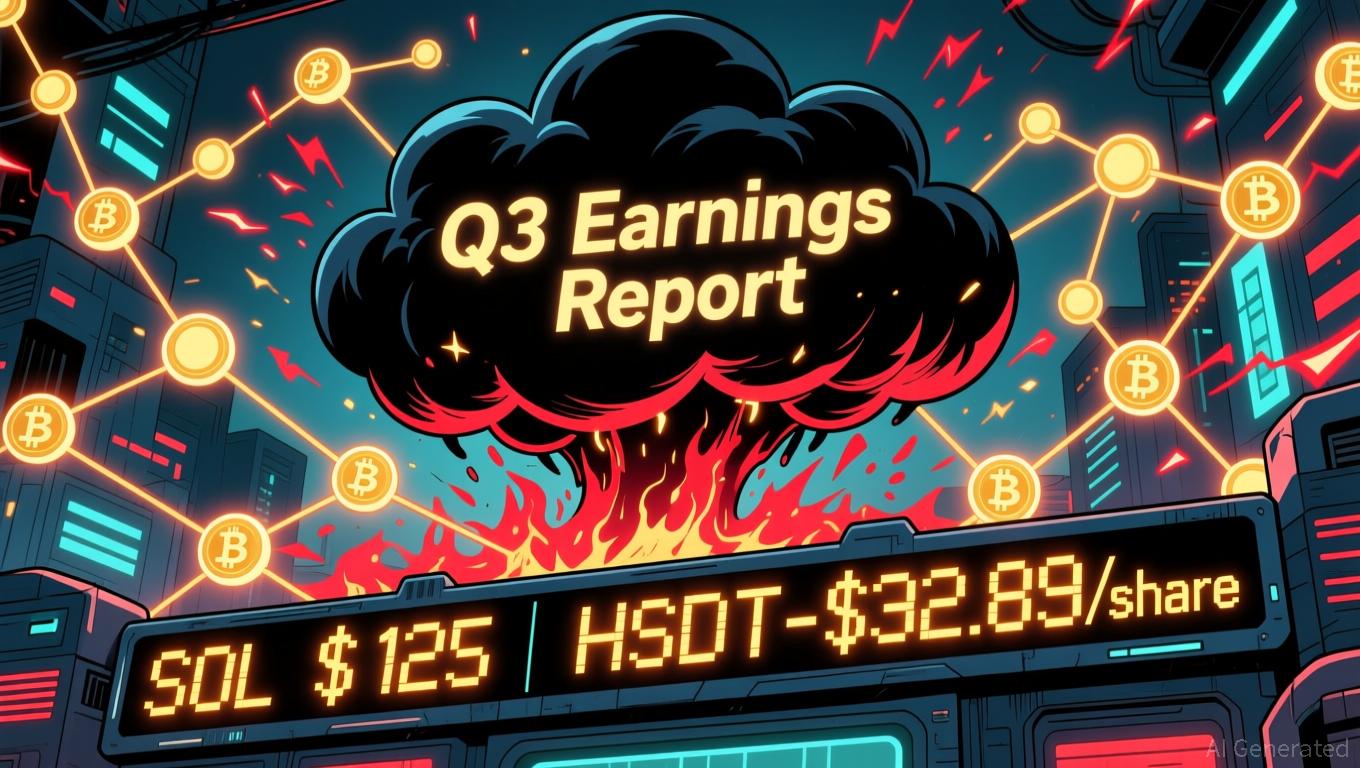Bitcoin Drops Amid Growing Fed Inflation Challenges
- Bitcoin fell below $110,000 after U.S. PCE inflation rose to 2.7% YoY, complicating Fed rate-cut expectations and triggering crypto market volatility. - ETF inflows dropped to $930M post-PCE release as institutional investors reduced exposure amid inflation fears and profit-taking. - Key support levels at $108,000–$108,500 are critical; a break could push prices toward $90,000–$95,000, while rebounds above $111,000 may signal bullish momentum. - Analysts warn "sticky inflation" could delay Fed cuts, harm

Bitcoin’s value slipped beneath $110,000 after the U.S. Personal Consumption Expenditures (PCE) inflation report was released, showing a 2.7% year-over-year increase for August. While this matched market expectations, it heightened worries about possible Federal Reserve rate hikes. The core PCE index, which omits the more volatile food and energy sectors, rose 0.2% from the previous month, further fueling concerns about ongoing inflationary trends [ 1 ]. Although the data was in line with forecasts, it has complicated the Fed’s anticipated rate-cut path, which had previously supported riskier assets such as Bitcoin [ 2 ].
Large institutional investors seem to be taking advantage of the increased volatility, as ETF inflows into
The Federal Reserve’s policy choices remain at the heart of market unpredictability. Although the Fed reduced rates in September, the latest PCE figures suggest it might adopt a more aggressive stance if inflation persists. The Kobeissi Letter, a macroeconomic research outlet, noted that despite PCE reaching its highest level in seven months, the Fed is still expected to move forward with rate cuts, which have been a key support for crypto markets [ 2 ]. However, crypto analyst Ali Martinez cautioned that persistent inflation could postpone these cuts, posing challenges for Bitcoin, which tends to perform better in environments with lower interest rates.
Technical analysis offers a mixed outlook for Bitcoin. The crucial support zone between $108,000 and $108,500 is being closely watched; a drop below this range could send prices down to $90,000–$95,000 [ 1 ]. On the other hand, a recovery above $111,000 could indicate renewed bullish sentiment if inflation worries subside [ 1 ]. The wider cryptocurrency market has also been hit hard, losing $400 billion in market value within a single week.
Investors are keeping a close eye on the Fed’s upcoming policy announcements and future PCE reports. The CME FedWatch Tool currently estimates an 83.4% chance of a rate cut at the October FOMC meeting [ 3 ], though this probability could change if inflation remains high. Analysts such as Jake Kennis from Nansen warn that “inflation coming in above expectations could prompt the Fed to take a more hawkish approach, leading to risk-off sentiment,” which has historically pressured crypto prices [ 3 ]. Meanwhile, some investors view the recent pullback as a buying opportunity, betting on Bitcoin’s long-term strength as a decentralized store of value [ 1 ].
The recent selloff triggered by PCE data underscores the increasing impact of macroeconomic trends on the cryptocurrency sector. While Bitcoin’s price continues to be influenced by Fed decisions, its reputation as an inflation hedge is being put to the test. As the central bank tries to balance inflation management with economic growth, Bitcoin’s future will depend on whether it can withstand short-term turbulence or if the market will revalue risk assets in anticipation of tighter monetary policy [ 1 ].
Disclaimer: The content of this article solely reflects the author's opinion and does not represent the platform in any capacity. This article is not intended to serve as a reference for making investment decisions.
You may also like
Bitcoin Updates: Federal Reserve's Mixed Signals Spark Bitcoin's Surge Back to $85K
Why Did Memecoins Collapse in 2025? The Shift Toward Utility-Based Cryptocurrencies
- The memecoin market plummeted in November 2025, with top tokens like SPX and DOGE losing over 14% amid a broader crypto slump. - Total crypto market cap dropped to $2.96 trillion, as investors shifted to utility-driven tokens like DeFi projects. - Analysts attribute the crash to macroeconomic sensitivity and retail-driven hype, with Bitcoin and Ethereum also falling 14-16%. - Despite the downturn, cautious optimism remains for a rebound if market conditions stabilize or new trends emerge.

Bitcoin News Update: "2025 Downturn Triggers Crypto Outflow: Savvy Investors Focus on Practical Use, Move Away from Hype"
- Bitcoin fell below its 50-week moving average on Nov 21, 2025, confirming a bear market with a 23% monthly loss and $2B in liquidations. - Crypto market cap dropped below $2.8T in 24 hours as Bitcoin ETFs saw $903M outflows and open interest fell 35% from October peaks. - Institutional investors shifted toward utility-driven projects like Digitap ($TAP), which raised $2M via presale with 124% APR staking rewards. - Digitap's hybrid crypto-fiat model combines blockchain with SWIFT/SEPA, targeting $250T pa

Solana News Update: Institutions Invest $2 Billion in Solana ETFs While GeeFi Presale Marks a New Era for Altcoins
- Solana (SOL) dropped 30% to $125 in late 2025 amid market volatility and a $352.8M Q3 net loss despite revenue growth. - Six new U.S. Solana ETFs drove $26.2M in inflows on Nov 18, with total assets exceeding $2B, reflecting institutional confidence in its infrastructure. - GeeFi (GEE) emerged as an altcoin contender, selling 50% of its Phase One tokens in 24 hours, leveraging Avalanche's 99.9% fee cuts and staking rewards. - Analysts highlight Solana's bearish technical indicators but note ETF inflows c
